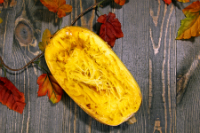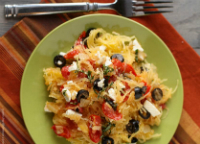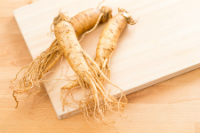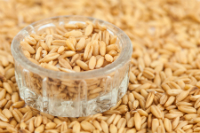JANUARY 2018
WHAT’S NEW
THE SECRETS TO BOUNCING BACK FROM ADVERSITY
When tough times bring you down, your ability to cope in a positive way is known as resilience. An essential skill for healthy development in childhood, resilience is critical to well-being throughout our lifetime. The overriding question is this: As adults can we increase our capacity for resilience in order to lead more fulfilling lives?

SIX SECRETS TO PUMPING UP YOUR RESILIENCE
CATCH IT EARLY. One trait of highly resilient individuals is a keen awareness for when things aren’t going right. We’ve all heard doctors say “Good thing we caught it early,” and that applies to stress. Identify stress early in the process and you can be proactive in managing how it (and your emotions) affect you and your health.
STAY IN THE LIGHT. Optimism is the ability to look at a dire situation and assess its meaning for your life. If a significant relationship has ended, there will be grief, confusion, anger and so on. There’s also an opportunity to re-examine your needs and explore what truly makes you happy. Amid dark times, you can mentally stay in the light by using positive affirmation, hanging-out with supportive people, and monitoring what you watch and read on a regular basis.
LOOK AT WHAT’S NEXT. We all tend to blame ourselves for setbacks, worrying about what could have been done/not done differently. To bolster resilience, remind yourself that even if you made a mistake, many factors likely contributed to the problem. Focus on next steps and see how the vibe of that situation changes from desperation to opportunity. Accept things the way they panned out, there’s no point being hung up on living in the past and reliving the memory over and over again. What is done is done and that’s all there is to it. The sooner you accept this fact the sooner you will be able to bounce back. Everything is perfect no matter how imperfect it looks. It’s all part of the bigger picture. Your pain is temporary and it too shall pass. The only way through any situation is forward. Set your focus on the next thing and begin your visualization process of what the next things looks like.
RECALL YOUR VICTORIES. We’ve all had shining moments of glory – whether at work, in sports, or potty-training a child. When you remind yourself of the challenges you have overcome, you give yourself a shot of resilience. Gratitude is key. We can always look at what is missing or what has gone wrong in our lives. If you find yourself doing this, refocus your energy on all the things for which you are grateful.
MANGE DAILY HASSLES. Whether sitting in traffic or waiting in an unexpected long line when you’re in a hurry, use those moments to practice coping skills (deep breathing, for example). Those mindful-skills will come more naturally to you when a crisis hits and you’ll have made a big deposit in your resilience bank. Take up deep breathing with HeartMath and make it a priority this year to develop your coping mechanisms. Synchronizing your brain and your heart is one of the best things you can ever do for yourself.
BREAK ROUTINE. Routines feel comfortable and are necessary – to a point – but rigidity breeds stress. Be flexible. A sense of adventure, even a simple but challenging activity, helps build resilience by enhancing skills that prepare you to handle stress. So, instead of the 1-mile fun run, enter the 5k; pass on the beach vacation and plan a guided backpacking trip; ditch date-night at the movies and go to the Escape Room or take a class (e.g. cooking or scuba).
FOOD FOR THOUGHT. . .
“If a man insisted always on being serious, and never allowed himself a bit of fun and relaxation, he would go mad or become unstable without knowing it.” – Herodotus
SPAGHETTI SQUASH: TASTY & GOOD FOR YOU

Spaghetti squash is at peak season from October to November. Choose a squash that is firm, heavy for its size and has a dull, not glossy, rind. Soft rinds may indicate that the squash is watery and lacking in flavor.
Some tasty yet simple ways to prepare spaghetti squash include:
- Top with pasta sauce and Mediterranean herbs
- Prepare with eggs, onions and spinach for a savory breakfast
- Combine with tomatoes, avocado, cumin and cilantro for a Latin flavor
- Toss with sesame seed oil, water chestnuts, carrots and bok choy for an oriental flavor
RECIPE: MEDITERRANEAN SPAGHETTI SQUASH

INGREDIENTS
- 1 3-4 lb spaghetti squash, halved lengthwise and seeded
- 2 tbspn sunflower oil
- 1 medium onion, chopped
- 1 clove garlic, minced
- 2 1/2 c. halved grape tomatoes
- 3/4 c. crumbled organic feta cheese
- 1/2 c. sliced organic black olives
- 3 tbspn chopped fresh basil
- Salt and pepper
Preheat oven to 350 degrees. Lightly grease a baking sheett and place spaghetti squash on the baking sheet, cut sides down. Bake until you can poke a sharp knife into the squash with little resistance, about 35-45 minutes. Remove squash from oven; set aside to cool.
Heat oil in a skillet over medium heat. Sauté onion in oil until tender. Add garlic and sauté for 30 seconds. Stir in the tomatoes and cook briefly, about 1 minute. You only want to warm the tomatoes.
Use a large fork to shred the “spaghetti” from the squash and place the strands in a large bowl. Toss with the sautéed vegetables, feta cheese, olives, and basil. Add salt and pepper to taste. Serve warm.
Recipe Source: Garnish with Lemon.
RESTORING RHYTHM WITH PANAX GINSENG

There are several varieties of Ginseng but it is Panax Ginseng (Asian) and Panax quinquefolius (American variety) that has received the most attention. Panax is a Greek term meaning “all heal.” Another related root is Siberian Ginseng, which has different effects and benefits for the body. It’s always best to obtain a Ginseng supplement from your holistic practitioner. This will ensure that you are using the proper variety and dose for your particular health concerns.
WILD OATS TO THE RESCUE!

Commonly used in tincture form, Wild Oat extract is a safe, gentle way to support nervous system health and restoration without the drowsiness associated with sedatives. It can also be prepared as an herbal infusion for tea. Preparation involves steeping in hot water until beverage has cooled to room temperature before drinking. A holistic practitioner can advise you on the specific amount of tincture or infusion that is ideal for your needs. If someone is gluten sensitive or has Celiac disease, Wild Oat must be derived from a gluten-free source.
REDUCE STRESS WITH MINDFULNESS

Popular media refers to mindfulness as any generic process of paying attention in life (mindfully doing the laundry). True mindfulness is more precisely defined as “being fully aware of one’s own mind, body, and surroundings by paying attention on purpose, in the present moment non-judgmentally and without attachment.”
It’s proven to be beneficial for various health concerns, often as good as, or better than, medication for:
- Lowering blood pressure
- Managing chronic pain and illness
- Enhancing decision-making
- Improving depression and anxiety
- Recovering from surgery, trauma, and injury.
The MBSR Program helps people learn to be non-reactive to stress, pain or other triggers, and to decentralize it from the focus of their lives. This results in a cascade of hormonal effects that take the body out of high-alert mode. When the body and mind are relaxed, immune function is enhanced and healing can take place.
An 8-week MBSR program is led by a certified teacher experienced in related practices, such as mindful eating, breath awareness, gentle movement, and walking. Programs can also be designed for specific concerns such as post-traumatic stress, grief, addiction, cancer or back pain. In addition to a mini-retreat, small, weekly classes meet for 90 minutes. The course is designed to help participants establish an at-home practice that becomes habitual. Habit is what makes for long-term results.
While in-person programs are ideal, there also are excellent online programs. Make sure to verify that the instructor is certified in MBSR.
THE SECRETS TO BOUNCING BACK FROM ADVERSITY
- APA.org. “The Road to Resilience.” Accessed 25 Nov 2017.
- Raab, D. “How to become More Resilient.” Psychology Today online (posted July 22, 2015) Accessed 26 Nov 2017.
- Mills, H. & Dombeck, M. “Resilience: Physical Health Benefits.”MentalHelp.net (posted June 25, 2005) Accessed 26 Nov 2017.
- Richardson, G.E. “The metatheory of resilience and resiliency.” Journal of Clinical Psychology. (2002) 58: 307-321. (print)
- Additional research articles by Professor Richardson
- Pinker-Pope, T. “How to be Happy.” Well: NY Times Online. Accessed 23 Nov 2017.
- “A Positive Outlook May be Good For Your Health.” Well: NY Times Online. Accessed 25 Nov 2017.
- Tugade, M., Fredrickson, B.L. & Barrett, L.F. “Psychological Resilience and Positive Emotional Granularity: Examining the Benefits of Positive Emotions on Coping and Health.” Journal of personality (2004) 72.6: 1161–1190. PMC. Web. 27 Nov. 2017.
SPAGHETTI SQUASH: TASTY & GOOD FOR YOU
- World’s Healthiest Foods “Squash, Winter.” Accessed 26 Nov. 2017.
- TheScienceofEating.com “Benefits of Spaghetti Squash.”Accessed 26 Nov. 2017.
RESTORING RHYTHM WITH PANAX GINSENG
- Al-kuraish, H.M. & Al-Gareeb, A.I., “Eustress and Malondialdehyde (MDA): Role of Panax Ginseng: Randomized Placebo Controlled Study,” Iranian Jl of Psychiatry (July 2017) 12:3, 194-200. Accessed 2 Nov 2017.
- Reay, J. L., Scholey, A. B. and Kennedy, D. O. “Panax ginseng (G115) improves aspects of working memory performance and subjective ratings of calmness in healthy young adults.” Hum. Psychopharmacol. Clin. (2010), Exp., 25: 462–471. doi:10.1002/hup.1138 Accessed 2 Nov 2017.
- Geng J., Dong J., Ni H, Lee, M.S., et al., “Ginseng for cognition. Cochrane Database of Systematic Reviews” (2010) Issue 12. Art. No.: CD007769. DOI: 10.1002/14651858.CD007769.pub2. Accessed 2 Nov 17.
- Shergis, J. L., Zhang, A. L., Zhou, W. and Xue, C. C. (2013), “Panax ginseng in Randomised Controlled Trials: A Systematic Review.” Phytother. Res., 27: 949–965. doi:10.1002/ptr.4832 Accessed 2 Nov 17.
- Kim, Hyeong-Geug et al. “Antifatigue Effects of Panax Ginseng C.A. Meyer: A Randomised, Double-Blind, Placebo-Controlled Trial.” Ed. John E. Mendelson. PLoS ONE 8.4 (2013): e61271. PMC. Web. 2 Nov. 2017. Accessed 2 Nov 17.
WILD OATS TO THE RESCUE!
- Winston, D. “Nervines: Complementary Herbs for Adaptogens.” Accessed 2 Nov 2017: (Main Site)
- Red Root Mountain School of Botanical Medicine. Accessed 2 Nov 2017.
- Kennedy, D.O., Jackson, P.A., et al., “Acute effects of a wild green-oat (Avena sativa) extract on cognitive function in middle-aged adults: A double-blind, placebo-controlled, within-subjects trial.” Nutri Neurosci (2017) 20:2. Accessed 2 Nov 2017.
REDUCE STRESS WITH MINDFULNESS
- UMassMed.edu Center for Mindfulness. (Teacher and Program locator, research, education and training)
- Mindful magazine (print) “The Science of Mindfulness.” (2017, Dec). NY: New York.
- Kabat-Zinn, J. Full Catastrophe Living: Using the Wisdom of Your Body and Mind to Face Stress, Pain, and Illness. (Revised Ed. 2013).
- Brody, Jane E. “Alternatives for Treating Pain.” NYT Well Online. (posted 11 Sept 2017) Accessed 26 Nov. 2017:
- TheMindfulPath.com mobile friendly program
- Online Mindfulness Course
GUIDING PRINCIPLES

First Do not Harm

Identify and Treat the cause

Healing Power of Nature

Doctor as Teachers

Treat the Whole

Prevention is best Medicine
Follow us on instagram
BLOG
Become an educated consumer with our Indigo Blogs and prevent dis-ease.
Our Doctors have been featured in:









